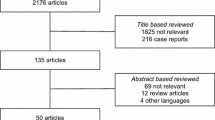Abstract
Most patients with acute heart failure present with increased left ventricular filling pressure and high or normal blood pressure; only a minority present with cardiogenic shock. In this context, therapy with vasodilators in the acute setting can improve both hemodynamics and symptoms. Vasodilators are usually given in conjunction with diuretics, although much of the acute effect of loop diuretics may be due to venodilation. Currently available agents include nitroglycerin, nitroprusside, and nesiritide. Nitroglycerin relieves pulmonary congestion primarily through direct venodilation, but may dilate coronary arteries and increase collateral blood flow at higher doses, an effect desirable in patients with ischemia. Tachyphylaxis may develop, necessitating incremental dosing. The major adverse effects of nitrates are hypotension and headache. Nitroprusside is a balanced arterial and venous vasodilator with a very short half-life, facilitating rapid titration. Afterload reduction lowers blood pressure and can increase stroke volume. The major complications of nitroprusside therapy are hypotension, and toxicity from accumulation of cyanide or thiocyanate, usually in patients with renal insufficiency treated for more than 24 h. Nesiritide, a recombinant form of human B-type natriuretic peptide (BNP), is a venous and arterial vasodilator that may also potentiate the effect of concomitant diuretics. Hypotension is the most common side effect. In addition, meta-analyses have suggested that nesiritide may worsen renal function and decrease survival at 30 days compared to conventional therapies. Resolution of these concerns awaits completion of appropriately powered prospective clinical trials. Angiotensin-converting enzyme (ACE) inhibitors have vasodilatory effects, but intravenous infusion of enalapril within 24 h of ischemic chest pain is not recommended. Oral ACE inhibition may be used to reduce afterload in other settings if blood pressure permits. Use of calcium antagonists in acute heart failure is not recommended.
Similar content being viewed by others
References
Felker GM, Adams KF Jr, Konstam MA, O’Connor CM, Gheorghiade M (2003) The problem of decompensated heart failure: nomenclature, classification, and risk stratification. Am Heart J 145(2 Suppl):S18–S25
Adams KF Jr, Fonarow GC, Emerman CL et al (2005) Characteristics and outcomes of patients hospitalized for heart failure in the United States: rationale, design, and preliminary observations from the first 100,000 cases in the Acute Decompensated Heart Failure National Registry (ADHERE). Am Heart J 149:209–216
Cleland JG, Swedberg K, Follath F et al (2003) The EuroHeart Failure survey programme—a survey on the quality of care among patients with heart failure in Europe. Part 1: patient characteristics and diagnosis. Eur Heart J 24:442–463
Zannad F, Mebazaa A, Juilliere Y et al (2006) Clinical profile, contemporary management and one-year mortality in patients with severe acute heart failure syndromes: The EFICA study. Eur J Heart Fail 8(7):697–705
Teerlink JR (2005) Overview of randomized clinical trials in acute heart failure syndromes. Am J Cardiol 96(6A):59G–67G
Nohria A, Lewis E, Stevenson LW (2002) Medical management of advanced heart failure. JAMA 287(5):628–640
Dikshit K, Vyden JK, Forrester JS, Chatterjee K, Prakash R, Swan HJC (1973) Renal and extrarenal hemodynamic effects of furosemide in congestive heart failure after acute myocardial infarction. N Engl J Med 288:1087–1090
Cotter G, Metzkor E, Kaluski E et al (1998) Randomised trial of high-dose isosorbide dinitrate plus low-dose furosemide versus high-dose furosemide plus low-dose isosorbide dinitrate in severe pulmonary oedema. Lancet 351:389–393
Cohn PF, Gorlin R (1974) Physiologic and clinical actions of nitroglycerin. Med Clin North Am 58:407–415
Elkayam U, Bitar F, Akhter MW, Khan S, Patrus S, Derakhshani M (2004) Intravenous nitroglycerin in the treatment of decompensated heart failure: potential benefits and limitations. J Cardiovasc Pharmacol Ther 9(4):227–241
Flaherty JT, Becker LC, Bulkley BH et al (1983) A randomized trial of intravenous nitroglycerin in patients with acute myocardial infarction. Circulation 68:576–588
Munzel T, Daiber A, Mulsch A (2005) Explaining the phenomenon of nitrate tolerance. Circ Res 97(7):618–628
Elkayam U, Akhter MW, Singh H, Khan S, Usman A (2004) Comparison of effects on left ventricular filling pressure of intravenous nesiritide and high-dose nitroglycerin in patients with decompensated heart failure. Am J Cardiol 93(2):237–240
Cohn JN, Burke LP (1979) Nitroprusside. Ann Intern Med 91:752–757
Durrer JD, Lie KI, van Capelle FJ, Durrer D (1982) Effect of sodium nitroprusside on mortality in acute myocardial infarction. N Engl J Med 306(19):1121–1128
Cohn JN, Franciosa JA, Francis GS et al (1982) Effect of short-term infusion of sodium nitroprusside on mortality rate in acute myocardial infarction complicated by left ventricular failure: results of a Veterans Administration cooperative study. N Engl J Med 306(19):1129–1135
Chiariello M, Gold HK, Leinbach RC, Davis MA, Maroko PR (1976) Comparison between the effects of nitroprusside and nitroglycerin on ischemic injury during acute myocardial infarction. Circulation 54:766–773
Colucci WS, Elkayam U, Horton DP et al (2000) Intravenous nesiritide, a natriuretic peptide, in the treatment of decompensated congestive heart failure. Nesiritide study group. N Engl J Med 343(4):246–253
VMAC Investigators (2002) Intravenous nesiritide vs. nitroglycerin for treatment of decompensated congestive heart failure: a randomized controlled trial. JAMA 287(12):1531–1540
Wang DJ, Dowling TC, Meadows D et al (2004) Nesiritide does not improve renal function in patients with chronic heart failure and worsening serum creatinine. Circulation 110:1620–1625
Sackner-Bernstein JD, Skopicki HA, Aaronson KD (2005) Risk of worsening renal function with nesiritide in patients with acutely decompensated heart failure. Circulation 111:1487–1491
Sackner-Bernstein JD, Kowalski M, Fox M, Aaronson K (2005) Short-term risk of death after treatment with nesiritide for decompensated heart failure: a pooled analysis of randomized controlled trials. JAMA 293:1900–1905
Swedberg K, Held P, Kjekshus J et al (1992) Effects of the early administration of enalapril on mortality in patients with acute myocardial infarction. Results of the Cooperative New Scandinavian Enalapril Survival Study II (CONSENSUS II). New England Journal of Medicine 327:678–684
Author information
Authors and Affiliations
Corresponding author
Rights and permissions
About this article
Cite this article
Hollenberg, S.M. Vasodilators in acute heart failure. Heart Fail Rev 12, 143–147 (2007). https://doi.org/10.1007/s10741-007-9017-2
Published:
Issue Date:
DOI: https://doi.org/10.1007/s10741-007-9017-2




